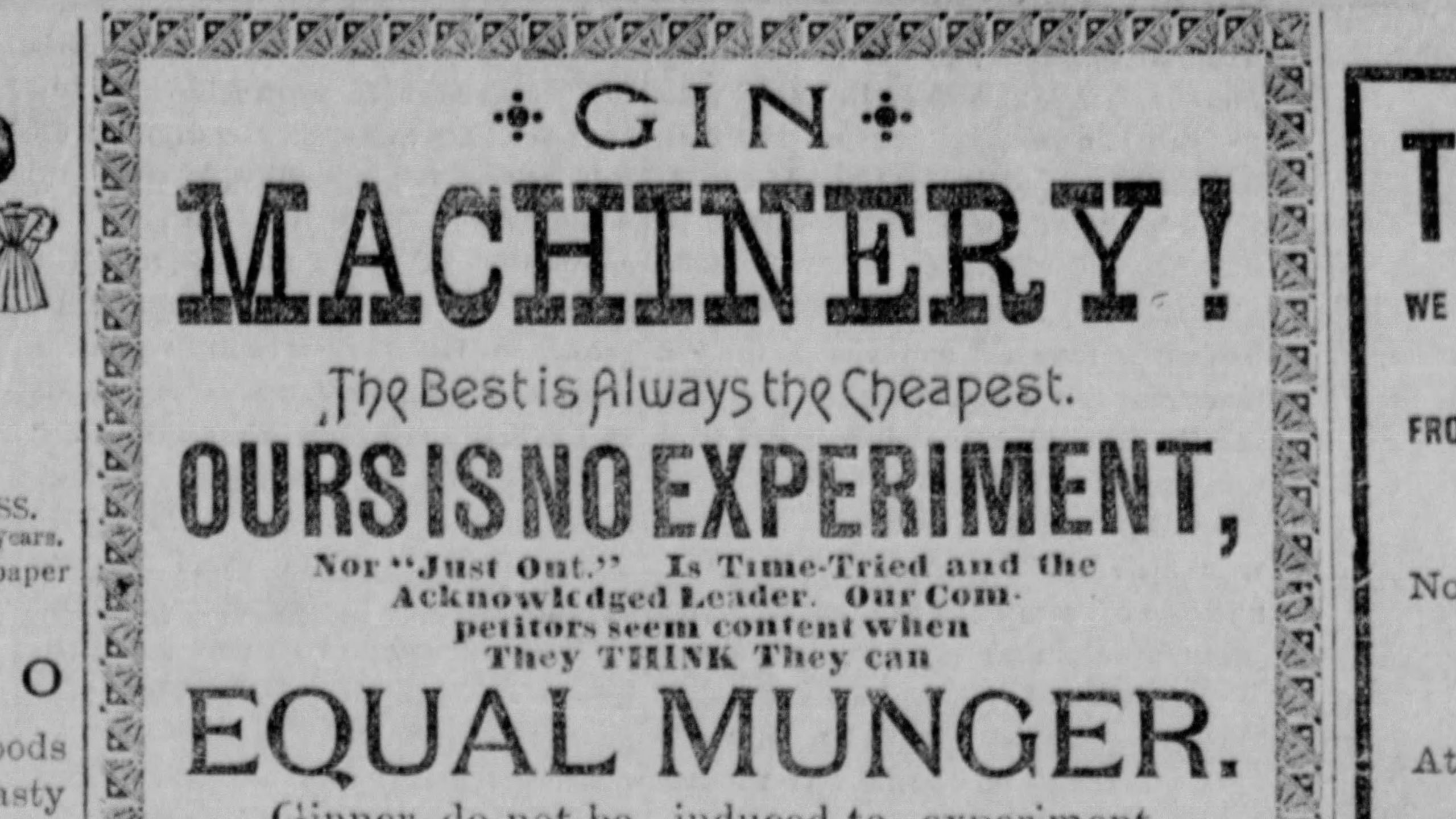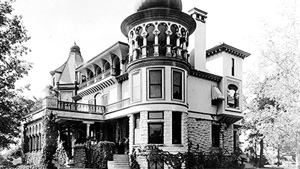
The Munger family got its start in the cotton industry in the Mexia area. Henry Munger was the patriarch. He was born in Colchester, Connecticut in 1825. When he was still a child his parents, Sylvester Munger (1787 – 1838) and Asenath “Sene” Ingham Munger (1777 – 1840), moved to South Carolina. By 1840, both of his parents had died in South Carolina and Henry came to San Felipe, Texas with his older siblings. He clerked at a mercantile store and briefly tried his hand at gold mining in California. Henry appears to be listed in an 1850 census there, but soon he was back in Texas.
In 1851, Henry was married to the former Jane Catherine McNutt of the Hutto area. Catherine was the daughter of Major Robert McNutt who had come to Texas in 1834 and was a veteran of the battle of San Jacinto. Within a few years, the couple had the first of their children. The eldest was Robert Sylvester (born 1854) followed by Stephen Ingram (born 1855), Charles Howard (born 1858), Henry Martin Jr. (born 1859), Anna Catherine (born 1862), Minnie Lee (born 1864), Hamilton McNutt (born 1869) and Carrie (born 1872) all of whom live to be adults. Two other children, William Nelson and Lillie, died as infants.
Henry began working in the construction business in projects related to the booming railroad industry, specifically for the Houston and Texas Central Railroad. His work took him to Limestone County and he was particularly drawn to Mexia. There he saw the potential for a good location to settle with his family. Mexia had a favorable climate, rich soil for farming and a growing settlement with the potential for future construction projects. Another attraction for the area was a school located a few miles from Mexia, Tehuacana college. Tehuacana, named for a local Indian tribe, was a small settlement about six miles from Mexia and the school located there later became Trinity University. Henry completed his contracts for the railroad and then returned to Mexia to live. A 1971 newspaper article in the Mexia Daily News has him building his home there, doing some farming and starting a lumber yard and lumber mill that was powered by steam. Their business expanded to grist mills, flour mills and later cotton gins.
Their first cotton gin they built was powered by horses on treadmills, the article said, and was capable of producing five bales of cotton per day. Their improved gin was completed around 1895 and had a much greater capacity, and was able to produce three bales of cotton at a time. Robert, the oldest child, grew up working in the gin and mill business while Stephen, Hamilton and others were more attracted to the family farms.
Robert had a natural understanding of machinery and is credited in the article with making numerous innovations to the systems. One of the first was to add a conveyor belt with metal spikes to help bring cotton from the farmers’ wagons into the gin, rather than having to transfer the cotton into the building one basket at a time. This was soon replaced with a suction system he designed to pull the cotton from the wagons into the building and another system that would press and bag the processed cotton after which the bale was secured with iron bands. The Mexia cotton gin became known for its efficiency and innovations. When Robert was about twenty-six, he moved his family to Dallas to build a factory there. The Mexia operation continued to be run by Henry and other family members. At its peak, the Munger family owned twenty-two cotton gins in Freestone and Limestone counties. Henry Munger died on July 4, 1899 and is buried in Mexia. His wife Catherine died in 1902 and is also buried there.

Robert continued to improve the ginning operation. Another article credits him for having received at least ten patents for his equipment and improvements. In the mid to late 1880s, he and other investors founded the Munger Improved Cotton Machine Manufacturing Company. Other investors included local individuals including some of his family members like his brother Stephen, an oilman and banker, and W. H. Gaston, a major Dallas banker who assisted with the financing. The business was successful and marketed ginning equipment in other states. After about ten years in Dallas, Robert relocated to Birmingham, Alabama where he would remain for the rest of his life. There he opened a new plant.
In 1899, the Munger company was part of a large merger that created the Continental Gin Company. Robert served as Vice President and a director and Stephen served as President. Continental Gin Company was created by combining several other successful businesses in the industry and for many years it dominated this segment of the manufacturing of ginning equipment.
Robert had married the former Mary Collett of Freestone County in 1878. Between 1879 and 1894, the couple had at least eight children, seven of whom survived to adulthood. After relocating to Alabama around 1890, Robert continued to be interested in and invest in Dallas. He is known for having developed Munger Place with three hundred acres of land that he acquired in 1905. The couple’s eldest son Collett Henry Munger (1879 – 1928) was the manager. It was conceived as a high end neighborhood. Robert was known as a philanthropist and supported Methodist colleges. He is known as a founding benefactor of Southern Methodist University. Robert Munger died in 1923 and his wife Mary Collett Munger died the following year. Both of them are buried in Birmingham, Alabama as are many of their descendants.
The influence of the Munger family is still evident in Dallas. Their Munger Place development is now the Munger Place Historic District, generally from Junius to Reiger Streets and Henderson to Prairie Street. It has been called “the largest intact collection of Prairie-influenced structures in North Texas.” (1) Munger Avenue and Collett Avenue are named for family members. Many local businesses and institutions have Munger in the name, including the Munger Place Church, formed as an East Dallas campus of Highland Park United Methodist Church. The Continental Gin Building was in operation as a manufacturing facility of agricultural processing equipment for over sixty years. For a while after that operation ceased it was used as an unrelated manufacturing operation before being converted to other commercial uses. Located at Elm and Trunk Street, it is a Dallas Historic Landmark.(2)
(1) Dallas City Hall – Historic Preservation – Munger Place Historic District.
(2) Dallas City Hall – Historic Preservation – Continental Gin Historic District.
(Used with permission)
Get future posts by email.


